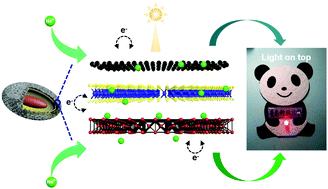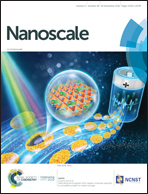Fabricating ferromagnetic MoS2-based composite exposed to simulated sunlight for sodium storage†
Abstract
A light- and magnetic stimuli-responsive MoS2 composite electrode material is designed and evaluated as an anode material of sodium ion batteries. Through the assistance of simulated sunlight, suppressed dendritic sodium growth, buffered volume deformation, promoted electrochemical reaction kinetics, and improved structural stability are simultaneously achieved. Meanwhile, ferroelectric polarization enhances the separation efficiency of photogenerated carriers. The collisions among electrons are dramatically decreased; in turn, the thermal stability of the battery is improved via the tailored orientation of active materials. A stable protective solid-state electrolyte interface film is formed via the photogenerated electrons and the magnetohydrodynamics effect, depressing the growth of sodium dendrites. The porous three-dimensional heterostructure is conducive for promoting transmission of charges and the diffusion of ions, effectively reducing the local current density of metals, further inhibiting the growth of sodium dendrites during deposition and peeling processes. Density functional theoretical calculations also verify that the fabricated MoS2 composite possesses intensified electron density, and exhibits fast reaction kinetics in repeated cycles and lowered sodium adsorption energy. The optical field and the rational magnetic fabrication technology can fundamentally solve the bottleneck problems restricting the development of batteries, mitigating the energy crisis.



 Please wait while we load your content...
Please wait while we load your content...